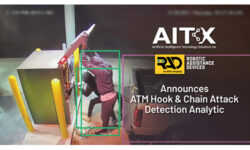Is It Time for the Security Industry to Embrace Drones? Here’s What Experts Say
While drone systems can quickly and efficiently gather crucial data for all manner of life-safety, reconnaissance and security deployments, they still face some implementation challenges.

Among the newest technology applications to be considered promising in the security industry are unmanned aerial vehicles (UAVs) or drones. Driving the interest of manufacturers, security providers and end users alike are the expanding capabilities of drone systems to quickly and efficiently gather crucial data for all manner of life-safety, reconnaissance and security deployments.
The rising drumbeat from drone marketers is not unfounded. A recent study by the Freedonia Group forecasts safety- and security-related drones sales — excluding military procurements — will double by 2019, climbing to $250 million over current sales estimates.
Sales are then expected to experience “explosive growth” between 2019 and 2022, increasing more than fourfold. Over the long term, growth prospects are likely to remain strong, with sales projected to increase nearly sevenfold between 2022 and 2028.
Freedonia Group also approximates that safety and security drone sales account for 20% of the total commercial UAV market share. Among the reasons for the expansion, the report notes: Rapidly spreading awareness of the capabilities and benefits of commercial drones, including the option to integrate drones into existing security systems and services to provide actionable intelligence.
“Drones bring clarity to any ground situation from above. The main use cases for drones and law enforcement are search and rescue, surveillance and for first-responder applications,” says Alex Netto, a spokesman for Dronefly, an online retailer. “Drones are extremely important in active-shooter scenarios since the quick deployment of a drone provides an immediate eye in the sky to bring real-time intelligence to ground operations.”
Based in Southern California, CitiGlobal is an example of a traditional security provider that is transitioning its manned guarding business to increasingly focus on the application of UAV technology. “What I personally have been trying to push is construction sites,” says CitiGlobal CEO Adel Barry, “having one charging platform for two drones that take alternate shifts for 24-hour security or just for night-time security. The quadcopters fly GPS-coordinated perimeter security around the construction sites while taking video with cameras deployed on gimbals to safeguard equipment that is oftentimes stolen.”
As economies of scale improve, more affordable equipment costs are also expected to help fuel broader demand across various market niches, Barry says. These include smart city environments, providing support for critical infrastructure protection and, fighting forest fires and coastal monitoring.
Among the biggest obstacles to mass adoption of drones are the various regulations that restrict what drone operators can do. The Federal Aviation Administration (FAA) has several rules that are considered to be hindering drone market growth.
A big one: drone operators must keep the UAV within their sight.
“The flight is conducted within visual line-of-sight and not from a moving vehicle. External loads must be securely attached and cannot adversely affect the flight characteristics or controllability of the aircraft, and the aircraft with payload must weigh less than 55 pounds at take-off,” he says. “This is why drone delivery has not taken off since the drone must remain in the line of sight.”
Further technical advancements, such as combining UAVs or even unmanned ground vehicles (UGVs), with machine learning algorithms may be met with wary acceptance in the security marketplace, says Hanwha Techwin Senior V.P. of Sales, North America, Tom Cook.
Such advancements will be more useful for defense applications, he explains. “Most facility and security managers are not comfortable with relying on robot-type guards or security yet as our industry can be slow to adapt to new technologies,” Cook says. “Safety, privacy and ultimate responsibility are all issues that have to be carefully considered with this emerging technology.”
What are some projected achievements we might see in the next five, 10 or even 20 years?
“I do not believe there is ever an end to these improvements, especially when you start talking about combinations of solutions,” says Sean Lawlor, a team leader for the Genetec Data Science group. “There are some things that a machine will never be able to do. However, we can utilize what the technology does well to minimize the costs of security and improve operations.”
Lawlor provides the example of how combining an unmanned drone on a self-determined flight pattern based on reports of violence in a region leveraging video analytics is possible.
“These technologies together could be used to automatically keep the drone in the area and alert operators when violence is captured by the drone’s video feeds,” he says. “The combination of these technologies would be a powerful tool, but combining these features and delivering a reliable solution could take years of effort.”
If you enjoyed this article and want to receive more valuable industry content like this, click here to sign up for our FREE digital newsletters!

Security Is Our Business, Too
For professionals who recommend, buy and install all types of electronic security equipment, a free subscription to Commercial Integrator + Security Sales & Integration is like having a consultant on call. You’ll find an ideal balance of technology and business coverage, with installation tips and techniques for products and updates on how to add to your bottom line.
A FREE subscription to the top resource for security and integration industry will prove to be invaluable.








